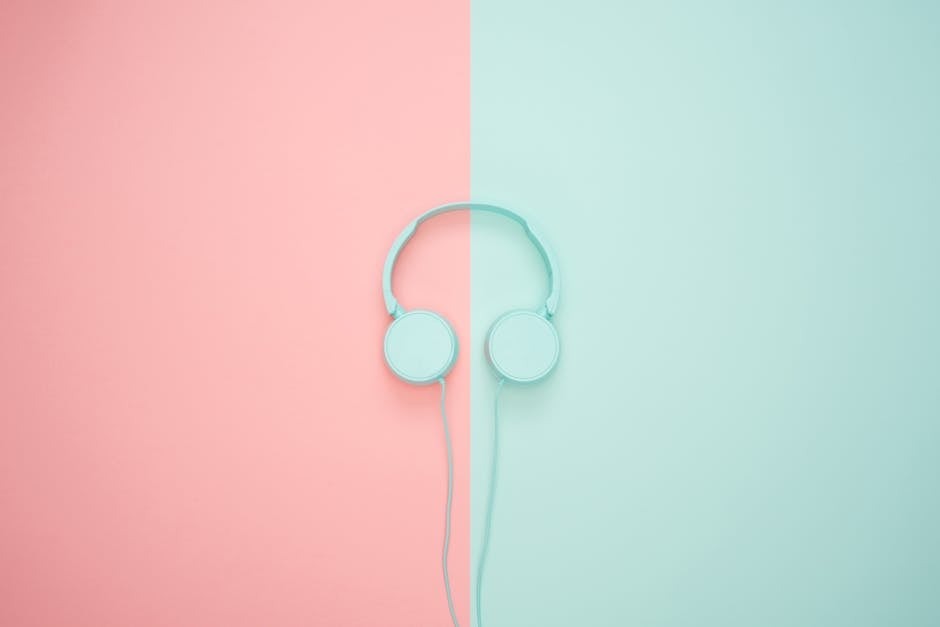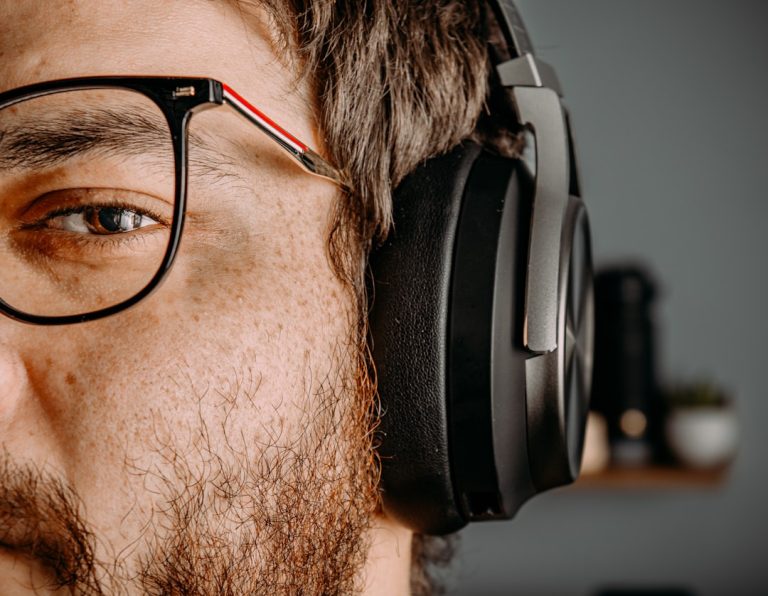My Guide to Using Headphones Effectively for Focus (beyond Noise Cancelling)
In a world brimming with digital pings, open-plan office chatter, and the constant hum of daily life, finding a sanctuary for focused work has become a modern quest. Many of us instinctively reach for our headphones, hoping to silence the chaos with a flick of an Active Noise Cancelling (ANC) switch. While noise cancellation is undeniably powerful, my journey to truly harness headphones for peak concentration revealed something crucial: effective focus goes far beyond simply blocking out sound. This guide isn’t just about what headphones to buy, but how to integrate them into your workflow, mindfully and strategically, to cultivate a profound state of focus.
Unlocking Deeper Concentration: Why “Beyond Noise Cancelling” Matters
For years, I believed the more noise cancelled, the better my focus. While eliminating jarring external distractions is a critical first step, I often found myself still struggling to achieve deep work. The silence, at times, felt too stark, leaving my mind to wander or conjure its own internal distractions. The truth is, focus isn’t just the absence of noise; it’s the presence of intentionality. It’s about actively shaping your auditory environment to support cognitive tasks, rather than just passively shielding yourself.
Think of it this way: a fortress wall (noise cancelling) protects you from invaders, but what happens inside the fortress still determines productivity. We need strategies for what to *do* with that protected space. This understanding shifted my approach from merely blocking sound to actively curating it, transforming my headphones from a passive barrier into an active tool for mental clarity and sustained attention. It’s about leveraging sound – or strategic silence – as a cognitive enhancer.
The Pitfalls of Pure Silence for Some Minds
While some thrive in absolute quiet, many brains, mine included, can find it unsettling. The brain abhors a vacuum, and in the absence of external stimuli, it might create its own internal “noise” – anxieties, to-do lists, or creative tangents unrelated to the task at hand. For others, pure silence can feel isolating or even amplify minor internal sounds (like breathing or a rumbling stomach), turning them into distractions. This is where the ‘beyond noise cancelling’ philosophy truly begins to shine, recognizing that the optimal auditory environment is highly personal and task-dependent.
The Science of Sound and Sustained Attention
Our brains are constantly processing sensory information, and sound plays a significant role in how we perceive and interact with our environment. The phenomenon of “auditory masking” is key here: when one sound renders another inaudible or less perceptible. Noise-cancelling headphones excel at this for external sounds, but strategic internal sounds can mask internal distractions or even guide brain activity. Research into sound and cognition reveals that certain auditory stimuli can influence our arousal levels, mood, and even our ability to sustain attention.
Navigating Cognitive Load with Auditory Cues
Different tasks demand different levels of cognitive load. A complex analytical report requires intense focus on linguistic and logical processing, making lyrical music a significant distraction. Conversely, a repetitive data entry task might benefit from a gentle auditory background to prevent boredom and maintain a steady pace. Understanding this interplay is crucial. When you choose an auditory backdrop, you’re essentially managing your brain’s available processing power, ensuring it’s directed towards the task at hand, not divided by irrelevant stimuli or a lack of engagement.

Curating Your Auditory Landscape: The Power of Intentional Sound Choices
Once the external world is sufficiently muted, the real work begins: deciding what, if anything, to let in. This is where you become the DJ of your own brain, selecting specific audio experiences that complement your focus goals. This isn’t about arbitrary playlists; it’s about understanding how different sound profiles interact with your cognitive processes.
Exploring Purpose-Driven Auditory Backgrounds
- Ambient & Environmental Soundscapes: For masking sporadic office chatter or maintaining a sense of calm without intrusive melodies, ambient sounds are excellent.
- White Noise: A consistent, broadband sound that effectively masks sudden auditory changes, creating a smooth, non-distracting background. It works by having a flat power spectral density across all audible frequencies. Ideal for tasks requiring high concentration, especially in noisy environments like cafes or open-plan offices, as it creates a “sound wall.”
- Brown Noise/Pink Noise: Deeper, less harsh variations of white noise, often found to be more soothing and effective for some individuals. Pink noise, for instance, has more power in lower frequencies, mimicking sounds like waterfalls or steady rain, which many find more relaxing than the higher-pitched hiss of white noise. Brown noise is even deeper, resembling a powerful rumble.
- Nature Sounds: Gentle rain, distant thunder, forest ambiance, or ocean waves can provide a calming, non-intrusive backdrop, particularly beneficial for creative tasks or when you feel stressed. Research suggests nature sounds can improve cognitive function and reduce stress, promoting a sense of natural tranquility that can aid focus without being overly stimulating.
- Instrumental Music for Flow States: When working on tasks that don’t require heavy linguistic processing, instrumental music can be a powerful tool for inducing a flow state.
- Classical Music (especially Baroque): Its consistent rhythm and predictable structure (e.g., Bach, Vivaldi) can often enhance focus without distracting lyrics. The tempo and complexity can sometimes align with optimal brainwave states for concentration.
- Lo-Fi Hip-Hop/Chillhop: Mellow beats, often with sampled jazz or soulful melodies and subtle background effects, can provide a consistent, unobtrusive background. Its low-energy, repetitive nature makes it popular for creative and less analytical tasks, creating a relaxed yet focused atmosphere.
- Cinematic Scores: Epic, sweeping scores without lyrics can sometimes elevate mundane tasks, making them feel more engaging and important. Think instrumental soundtracks that build mood and atmosphere without demanding direct attention.
- Electronic/Ambient Music: Genre like ambient techno, drone, or minimalist electronic music can provide a rich sonic texture that fills the auditory space without being melodically demanding, fostering a sustained sense of immersion.
- Binaural Beats & Isochronic Tones: These specialized audio tracks use specific frequencies to guide your brainwaves towards desired states (e.g., alpha waves for relaxation, beta waves for alertness, theta waves for deep focus). Binaural beats work by presenting two slightly different frequencies to each ear, with the brain perceiving a third “beat” frequency. Isochronic tones use a single tone that rapidly turns on and off. While scientific evidence is still evolving, many users report profound improvements in concentration and relaxation. It’s worth experimenting with these if you’re looking for an advanced auditory tool. You can find more about the potential benefits of binaural beats online.
- Podcast or Audiobook for Mechanical Tasks: When engaged in highly repetitive, low-cognitive-load tasks (e.g., data entry, cleaning, organizing, or even some coding tasks that involve pattern recognition rather than complex logic), a stimulating podcast or audiobook can actually prevent boredom and maintain engagement, without diverting attention from the primary task. This is a nuanced use, but effective for the right context, ensuring the content doesn’t directly compete with the task’s cognitive demands.
The key here is experimentation. What works for one task or mood might hinder another. Keep a mental note or even a log of what types of audio best support your focus for different activities.
Crafting Your Headphone Ritual: A Blueprint for Deep Work Entry
Headphones aren’t just a gadget; they can be a powerful cue for your brain. By integrating their use into a consistent routine, you can train your mind to enter a state of focus. This is about establishing a psychological anchor, a clear signal to your brain that it’s time to buckle down. Think of it as a pre-flight checklist for your mind.
Establishing Your Focus Trigger
Before you even put on your headphones, establish a brief, consistent routine. This might involve:
- Task Definition: Clearly define the single most important task you’re about to tackle. Write it down if necessary.
- Environment Check: Briefly scan your physical workspace for visual distractions and address them.
- Sound Selection: Consciously choose the auditory landscape appropriate for the task (e.g., “Today’s deep coding session needs brown noise,” or “This creative brainstorming calls for Lo-Fi”).
- Mindful Onboarding: As you place your headphones on, take a deep breath. This physical act, combined with the chosen sound, becomes a powerful signal to your brain: “It’s focus time.”
The Art of Mindful Breaks and Auditory Health
Sustained focus isn’t about continuous, uninterrupted work for hours on end. It’s about cycles of intense focus followed by restorative breaks. Your headphones play a crucial role here too.
- Scheduled Breaks: When your timer goes off (e.g., after a 25-minute Pomodoro session), take off your headphones. Step away from your screen. This act of “unplugging” physically and audibly allows your brain to reset.
- Hearing Protection: Long-term use of headphones, especially at high volumes, can lead to hearing damage. Follow hearing protection guidelines. Keep the volume at a comfortable level – generally, if someone standing near you can hear your music, it’s too loud. Aim for 60% of maximum volume for no more than 60 minutes at a time, or lower volumes for longer durations. Giving your ears a break is as important as giving your eyes a break.
- Mindful Offboarding: Just as you mindfully put them on, mindfully take them off. Let the ambient sounds of your environment re-enter your awareness. This helps prevent mental fatigue and ensures you don


